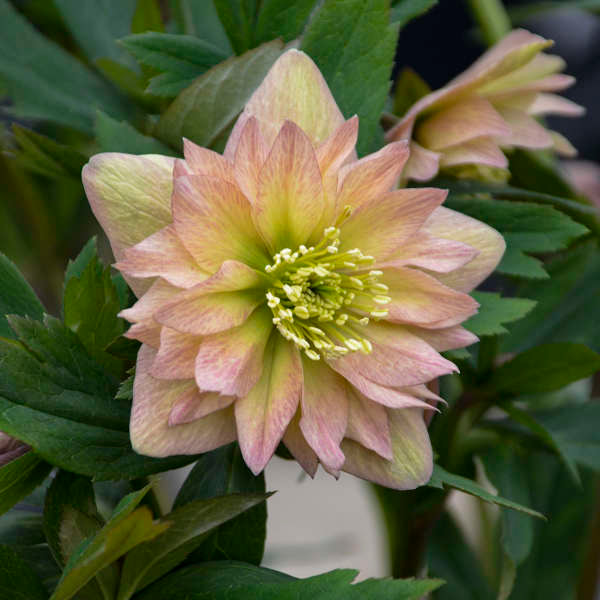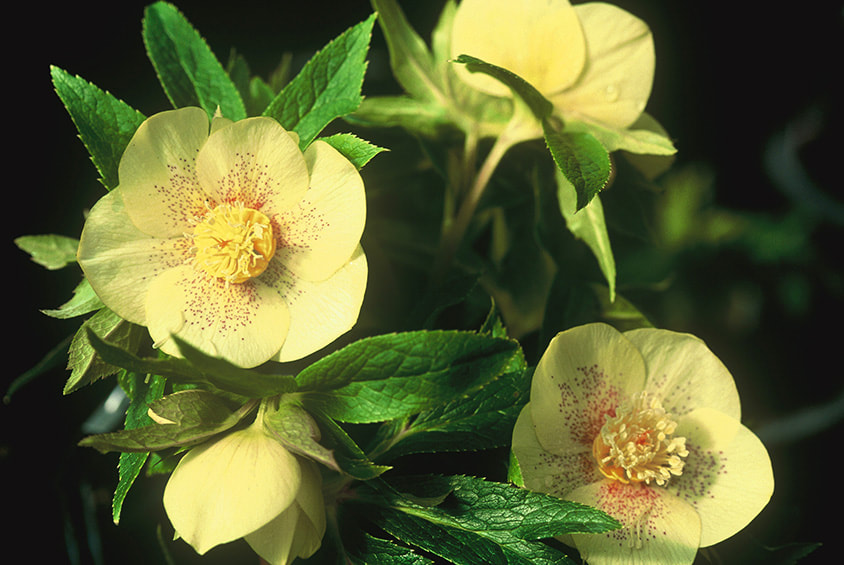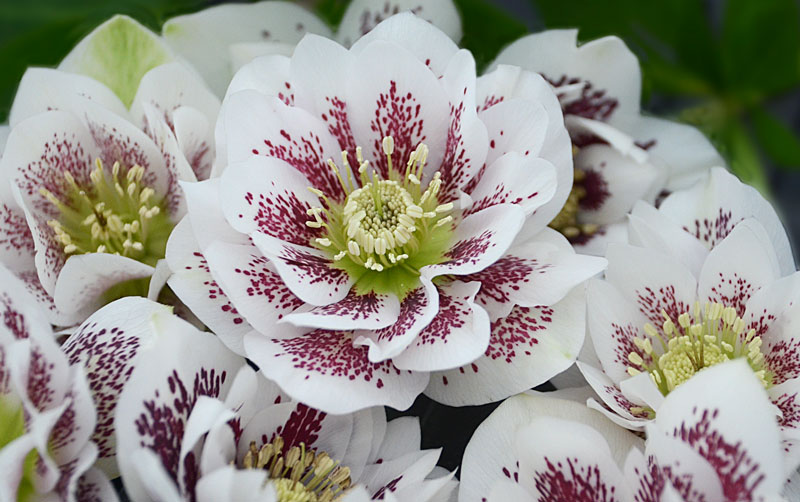by Judy Kautz, OSU Extension Master GardenerHellebores are some of the first flowers to pop-up in spring. Not only is this perennial easy to grow but they come in a surprising array of new colors! There’s a lot happening in the world of hellebores. Recent breeding has introduced new colors, never-before-seen shapes and even longer bloom times for these nearly perfect perennials. Perhaps all this renewed interest in hellebores is because they’re so easy to grow. Perhaps it’s because they bloom way before anything else — allowing you fresh-picked bouquets even in winter. Or perhaps it’s simply because gardeners find their jewel tones so gosh-darn hard to resist. “Their allure certainly arises from their precocious bloom time,” says C. Colston Burrell, author of Hellebores: A Comprehensive Guide. “Gardeners yearn for year-round bloom, and hellebores deliver a dose of spring in the winter months. The flowers are colorful and borne in profusion. They are also long-lasting. Because the showy parts of the flowers are sepals, not petals, they do not fade and shrivel like petals would. The color may persist for several months, carrying the bloom period well into spring.” Hellebores is often called the rose of winter. The most commonly grown type of hellebore is the diverse group of part shade-loving hybrids known as the Lenten or winter rose. Breeding has produced a wide range of intriguing hellebores. The flowers tend to nod downward (to protect the pollen) and are up to 3 inches across, typically in shades of white, rose, green or purple. Newer hellebore hybrids now have spotted flowers and pointed petals; others are double-flowered or bicolors or even streaked. New leaves emerge at bloom time, and plants grow into an excellent glossy evergreen ground cover. 'Mother of the Bride' hellebore (Helleborus x hybridus) is a perennial with a double apricot flowers with a light pink picotee edge. It needs part to full shade, and grows 18 to 24 in tall and wide. It is cold hardy in USDA zones 4 to 9. In the landscape Hellebores provide contrast in almost any companion planting. That’s because they set the stage for later-blooming tulips and daffodils, but the hellebore’s sturdy foliage remains to camouflage the dying foliage of the spring-blooming bulbs. Try planting hellebores on a slope, hillside, or in a raised bed where their blossoms are better appreciated. “Since hellebores generally nod,” Colston explains, “planting them on a slope allows you to see the inside of the flowers, which are more alluring in color and pattern than the backs of the flowers. The reason the flowers nod is to protect the reproductive structures — stamens and pistils — from frost damage.” Throughout most of North America, hellebores wait until the worst of winter is over to begin blooming around February and March, when the snow has melted or is just beginning to melt. All the more reason you should want to have plenty of hellebores on hand to properly herald spring’s long-awaited arrival. Garden Gate offers some tips for growing hellebores: If you want to divide your hellebores or need to transplant, do so in the fall. Dig up the whole plant, wash off the soil, then divide with a sharp knife between growth buds. Leave at least three of these dormant little shoots on each of the divisions. Hellebores frequently seed in large numbers around a parent plant, which can be dug up and transplanted. However, these hybrids will not be the same as the parent in color and form. 'Golden Sunrise' hellebore (Helleborus x hybridus) is a perennial with single pale-to deep golden-yellow flowers with contrasting red starburst centers. It needs part to full shade, and grows 18 to 22 in tall, 20 to 24 in wide. It is cold hardy in USDA zones 4 to 8. Hellebores appreciate plenty of sunlight during the winter when they are beginning their growing season, so site your plants in dappled shade or beneath trees that drop their leaves in autumn. Also, be careful not to plant hellebores too deeply. This can hinder flower production, so make sure the crown of the plant is just below the soil surface. All parts of the hellebore plant are toxic. That means deer and rabbit typically do not bother them. People who are sensitive to the alkaloids in the leaves should wear garden gloves to avoid developing a mild skin irritation after handling. Find a new hellebore for your garden. American breeders started bringing home garden-worthy hellebores in the 1980s. Today’s spectacular hybrids in shades of purple-black, plum, burgundy, lime-green, shell-pink and white are the result of hybridization of multiple species. Most of the best hybrids available in North America today are seed strains, some developed by making controlled crosses each season, while others come more or less from open-pollinated plants. Check out the gallery below to meet some of the more recent introductions from breeders here in the United States. 'Confetti Cake' hellebore (Helleborus x hybridus) is a perennial that blooms with double white flowers with burgundy speckling concentrated toward the centers. It needs part to full shade and grows 18 to 24 in tall and wide. It is cold hardy in USDA zones 4 to 9. I hope you will try this beautiful variety of plants in your landscape. They will reward you in early spring with gorgeous blooms that will stay around for several months.
0 Comments
Leave a Reply. |
Welcome to Dishing the Garden Dirt!
|



 RSS Feed
RSS Feed